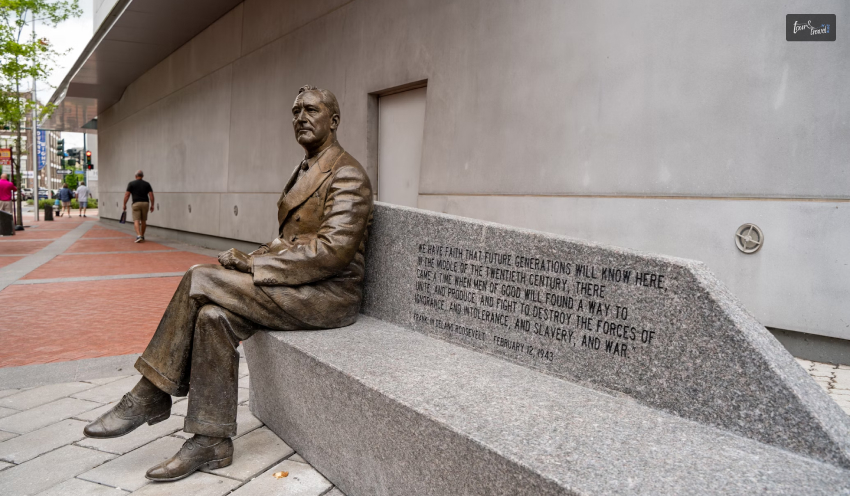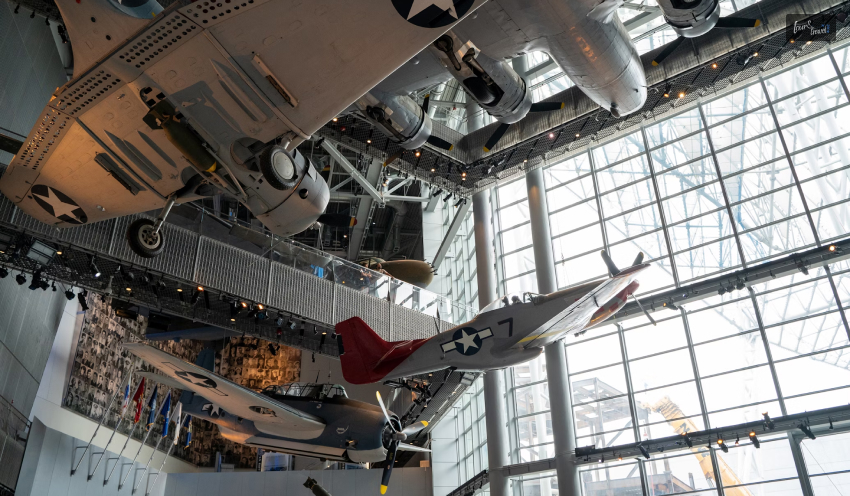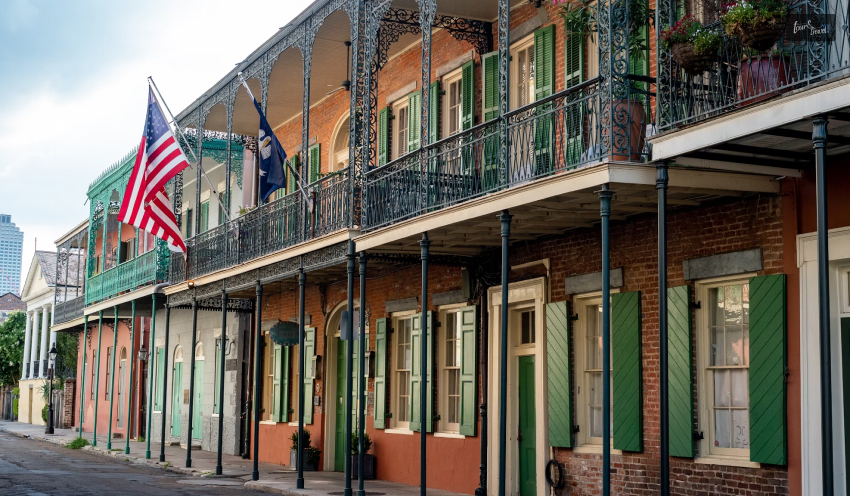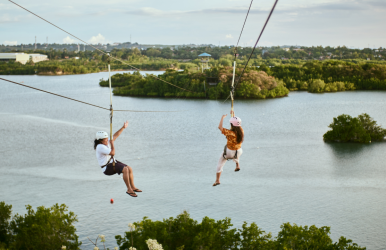Looking For The Best Restaurants In Sandusky, Ohio? Here Are the Top 11 Recommendations
BY Sibashree Jan 14, 2023
Welcome to a new restaurant guide – this time, we are in Sandusky, Ohio, and we are on an all-elusive hunt to find some of the most popular restaurants in Sandusky, Ohio. Are you new to Sandusky? Or is Ohio completely new to you? Or are you just a tourist on an extended vacation? Whatever might be your reason, we can help you to plan the perfect gastronomical adventure in Sandusky. All you have to do is stick around till the very end and keep reading to check out the best places to eat in the Sandusky region of Ohio! What Are The Top Recommended Restaurants In Sandusky, Ohio? So you are here to find the best place to eat in Sandusky Ohio – but one restaurant is just not enough! So we did some exploration, and it was almost a state of a food coma for us, but we did end up finding some of the best restaurants in Sandusky Ohio, and we are going to tell you all about them. Without wasting any more time, scroll down and read about the best of Sandusky – there’s nothing more lovable than food! 1. Amarone Italian Restaurant: One of the best places to eat in Sandusky Ohio, the Amarone Italian Restaurant is a must-visit, especially if you are a fan of Italian food! Here’s the information you need about this restaurant! Address 160 Wayne St, Sandusky, OH 44870 Phone (419) 502-5020 Hours Monday – Saturday: 5 pm – 9 pm | Sunday: Closed Review By Kevin Richardson: Quaint little restaurant off the beaten path. Excellent authentic Italian dishes. The food was very delicious and made correctly. I had veal parm, and it was one of the most tender veals I’ve ever had. The marina is delicious. Our server was very nice, helpful, and patient. It was a nice place for date night. My wife was very pleased. We will definitely go back and hope you give it a chance and check it out yourselves. 2. J Bistro Downtown: View this post on Instagram A post shared by Jessica (@lollipopodie) One of our favorite Sandusky Ohio restaurants, the J Bistro Downtown never fails to win hearts. And not just their food, but even their staff aims to please. Here’s the information you need about this restaurant! Address 129 W Market St, Sandusky, OH 44870 Phone (419) 502-2280 Hours Tuesday – Saturday: 5 pm – 9 pm | Sunday – Monday: Closed Review By Scott: The service was incredible, everyone was super attentive. The food here was off the charts, unbelievably good! The steak was cooked to perfection, as were the cod and shrimp! This is your best bet if you are in Sandusky and want a superior dinner! 3. Small City Taphouse: View this post on Instagram A post shared by Meri Stratton (@13th_clone) Small City Taphouse is one of the most popular restaurants in Sandusky Ohio – how can you not visit this crazy taphouse? The food, the vibes, and even the service – all top-notch! Here’s the information you need about this restaurant! Address 202 Columbus Ave, Sandusky, OH 44870 Phone (419) 502-0099 Hours Tuesday – Thursday: 3 pm – 10 pm | Friday – Saturday: 12 pm – 10 pm | Sunday: 12 pm – 9 pm | Monday: Closed Review By 875phyllish: Heard about this restaurant from a car rental service agent at the airport. This was a trip to Cedar Point and we asked about a good place to eat. Decided to visit and we were pleasantly surprised. The prices are reasonable and you receive large portions. The menu had a large variety of choices so much so that it was hard for me to make one selection. Our server, Sarah, was a tremendous help and was extremly attentive. If you are a beer drinker, this establishment makes over 80 types of beer. You will be happy to try several types and according to my daughter, you won’t be disappointed. I had a glass of Blufield German wine that was very good. I had a dish with shrimp, rice and onions and a great sauce. We always have an appetizer of tuna for the table and we were not disappointed. Each of my family members (5) said they wanted to come back the next day for dinner becausse the food was that good. 4. ‘BIG’ Jon’s pArTy Bar & Grill: ‘BIG’ Jon’s pArTy Bar & Grill was exactly what we thought – one of that minimal grills and bars that serve comfort food and a great selection of liquors. Here’s the information you need about this restaurant! Address 3129 W Monroe St, Sandusky, OH 44870 Phone (567) 283-5544 Hours Monday – Saturday: 4:30 pm – 2:30 am | Sunday: 3 pm – 1 am Review By Brian Schlottag: I enjoyed myself haven’t been in there since it was the Casino, Big Jon was very nice and down to earth, I will definitely go back again very soon!!! 5. Berardi's Family Kitchen: View this post on Instagram A post shared by joan a (@joanggraeni) Beradi Family Kitchen is perhaps one of the best Sandusky restaurants we found. It was such a family-friendly place – plus all the Italian and American favorites that we found here! Here’s the information you need about this restaurant! Address 1019 W Perkins Ave, Sandusky, OH 44870 Phone (419) 626-4592 Hours Tuesday – Saturday: 7 am – 7:30 pm | Sunday: 7:30 am – 1:30 pm | Monday: Closed Review By Sado Kim: Love the vibe. The service was great. Great quiche! Hash is pretty good too. On August 1st, 2022, their waffle machine is down, and they are trying to get it fixed. 6. Landmark Kitchen and Bar: View this post on Instagram A post shared by Landmark_bar (@landmark_kitchen) While searching for the top restaurants in Sandusky Ohio, we stumbled upon Landmark Kitchen and Bar, and our world was never the same again! What a beautiful experience! Here’s the information you need about this restaurant! Address 101 E Water St, Sandusky, OH 44870 Phone (419) 502-1213 Hours Wednesday – Saturday: 11 am – 10 pm | Sunday: 11 am – 10 pm | Monday – Tuesday: Closed Review By Mark Boff: I traveled from Pittsburgh looking for a great place to eat while in town, and The Landmark was outstanding. I had the hand-breaded fresh perch dinner, it was Fantastic. My girlfriend had the New York Strip cooked perfectly. 7. Port Sandusky Family Restaurant: View this post on Instagram A post shared by Jeff Kusner (@jkoozzz) You don’t have to type ‘restaurants Sandusky Ohio’ or even ‘restaurant Sandusky Ohio’ on Google – you can just save this article, and don’t miss out on Port Sandusky Family Restaurant! Here’s the information you need about this restaurant! Address 325 W Market St, Sandusky, OH 44870 Phone (419) 627-2028 Hours Monday – Saturday: 7 am – 2 pm | Sunday: 7 am – 1 pm Review By Sterling Auty: Family restaurant and the quality of the food really shines through. Everyone is super nice and helpful. Came from out of state, but if we travel through this way again, it is a definite stop on our list. 8. Crush Wine Bar: View this post on Instagram A post shared by Jeff Kusner (@jkoozzz) Come on, you can’t miss out on Crush Wine Bar while visiting the best restaurants in Sandusky Ohio! You will find an excellent selection of wines here, accompanied by small entrees and plates. Here’s the information you need about this restaurant! Address 145 Columbus Ave, Sandusky, OH 44870 Phone (419) 502-9463 Hours Monday – Thursday: 4 pm – 9 pm | Friday – Saturday: 4 pm – 10 pm | Sunday: Closed Review By Sado Kim: We had the best time here; We felt like a real local! Lindsay was great and made us feel SO welcome! This is a must-see spot if you’re in town. I will certainly be back! 9. Barra Tacos + Cocktails: View this post on Instagram A post shared by Barra Tacos + Coctails (@barratacos) Do you love Mexican food? Then Barra Tacos + Cocktails is the perfect Mexican eatery to visit, especially love handcrafted cocktails and enjoy an easygoing, modern vibe! Here’s the information you need about this restaurant! Address 142 Columbus Ave, Sandusky, OH 44870 Phone (419) 502-0025 Hours Sunday – Thursday: 11 am – 9 pm | Friday – Saturday: 11 am – 10 pm Review By Dennis Hart: Food and drinks were excellent, staff was very polite and accommodating. Also caught some great live entertainment in the bar upstairs. Read More: Trying ‘All You Can Eat Sushi’ In The United States? All The Top Places To Visit! 10. TONY'S: If you are looking for the most popular restaurants in Sandusky Ohio, then there’s no way to forget TONY’s! It’s a great place, and more importantly, they serve excellent hotdogs! Here’s the information you need about this restaurant! Address 115 W Water St, Sandusky, OH 44870 Phone (419) 502-9021 Hours Monday – Thursday: 11 am – 10 pm | Friday – Saturday: 11 am – 12 am | Tuesday: Closed Review By Chris Bradburry: Cool vibe! The food is great. They have a fried bologna sandwich, which is fantastic. We also had the pierogi as an appetizer, which was awesome. Good beer selection. Trivia night, when we were there on a Wednesday, was fun. 11. The Brick Oven Bistro View this post on Instagram A post shared by The Brick Oven Bistro (@brickovenbistro) Welcome to The Brick Oven Bistro, a cozy, family-owned gem that truly brings the heart of home cooking to life. Here, you’ll discover mouthwatering brick oven pizzas, along with delicious calzones, sandwiches, crispy wings, and a variety of appetizers and soups. Don’t forget to try our fresh salads and desserts; they make every meal special. One of the highlights of your visit will be our locally sourced gluten-free pizza crust, plus a range of other gluten-free options, so everyone can enjoy a slice of goodness. And if you’re a beer enthusiast, you’re in for a treat! With an extensive selection featuring some of the finest brews from Ohio and beyond, there’s something for everyone to sip and savor. We can’t wait for you to join us for a meal! Here’s the information you need about this restaurant: Address 1012 Cleveland Rd, Sandusky, OH 44870-4034 Phone +1 419-624-1400 Hours Sunday – 12:00 PM - 9:00 PM | Monday- Tuesday – closed | Wednesday- Thursday — 4:00 PM - 9:00 PM | Friday – 12:00 PM - 10:00 PM Saturday – 12:00 PM - 10:00 PM Review by Brooklyn M Absolutely wonderful. Excellent service, food was amazing. im not typically one to write reviews, but they earned it today. The Best Restaurants In Sandusky, Ohio Listed There are so many great restaurants in Sandusky Ohio, that we were completely spoilt for choice! After all, it’s not every day that you stumble upon so many crazy places to eat. You don’t even have to be specific with your search with terms like ‘restaurants in upper Sandusky Ohio’ or even ‘restaurants near Kalahari Sandusky Ohio.’ Instead, just save this article and when you are in Sandusky, come back because we sure have the best places listed! Tell us your thoughts on this subject, and at the same time, don’t forget to share your experiences in case you have already visited these places Read Also: Top Restaurants In Maitland Australia That Give You Culinary Delights! Top 10 Restaurants In Lagrange Ga – Restaurant Guide For Your Trip Best Restaurants In Honduras To Visit While Traveling

















